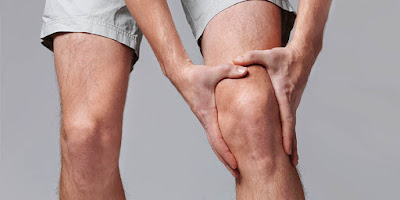Nothing seems worse than being injured in an accident. The feelings are even worse when the accident wasn’t your fault, but it costs you everything. Depending on how serious your injuries are you could have lost your job, received a ton of medical bills, and have a long way to go towards recovery. All you want to do is recover from the accident and reclaim your life. Though the journey towards recovery will be different for everyone, taking these steps can help to speed up the process.
See Your Doctor
Immediately following the accident, it is important for you to visit your primary care physician. Even if you don’t see any cause for concern, some injuries can be internal, causing damage you’re unaware of. Other injuries can pop up later. Therefore, you just want to have a record of what’s going on and when it started. Be sure to follow your doctor’s orders. If they give advice you don’t agree with, discuss alternate options.
Reduce Stress
High levels of stress will dramatically decrease your efforts to recover. Yes, you’re dealing with a lot right now, however, if you allow the stress to consume you, it can lead to an array of medical issues which will only result in more health problems to recover from. Here are some suggestions for reducing the stress after an accident:
- Hire an Attorney - When you’re dealing with raw emotion and physical pain, it can be difficult to keep a level head. However, that is exactly what is required to file a personal injury claim or lawsuit. To keep your best interests first, it is recommended that you consult with a legal professional like Steven Schwartzapfel, a personal injury lawyer to help. They can assist you with completing the personal injury claim, compiling evidence and reports, talking with the insurance agency, and if necessary, filing a case in court. If you win, you could get compensated for lost wages, medical bills, and more which would be a great way to relieve financial stress.
- Get Finances in Order - The bills won’t stop coming in simply because you’re out of work for the time being. Therefore, you should get your finances in order. Start by creating a budget and eliminating any excess spending. Then, apply for disability insurance to try and recoup some of that lost income. Lastly, contact your creditors or service providers to update them on your status. Try to work out arrangements that fit in your budget as opposed to letting the late fees pile up.
- Ask for Help - You may need a lot of help in reducing the stress of an accident. Friends and family can help with things like watching the children, transportation, cooking, and cleaning. Not to mention, being in an accident is traumatic and may require some therapy to get through. If you’re feeling depressed or anxious as well, you could benefit from the assistance of a therapist.
Your body will need all the right vitamins, nutrients, and minerals possible to recover from your injuries. You should start by eliminating processed foods, sweets, and salty treats. Make sure that you also cut back on the carbs. Instead, fuel up on lots of protein, fruits, and vegetables. Eating at least 3-5 times a day is recommended to give your body the ammunition it needs to heal itself.
Exercise When You Can
There is a common misconception that after you’ve been injured you should sleep or remain still 24/7. Though getting plenty of rest is a great way to help your body repair the damage from the accident, it isn’t enough. Sitting too long after being injured can lead to muscle loss, blood clots, and more. Once you’ve been cleared by the doctor, you should start exercising a few minutes each day gradually increasing the amount of time and intensity of exercises you do.
Recovering from the emotional, physical, and financial damage caused by an accident won’t happen overnight. However, if you follow the doctor’s orders, start relieving some stress, and take care of yourself by eating right and exercising as allowed, you’ll get through it a lot easier. People like your doctor, personal injury lawyer, friends, family, and therapist are all there to help you get through the process and back to yourself.
This is a blog post by Nancy Evans.



















